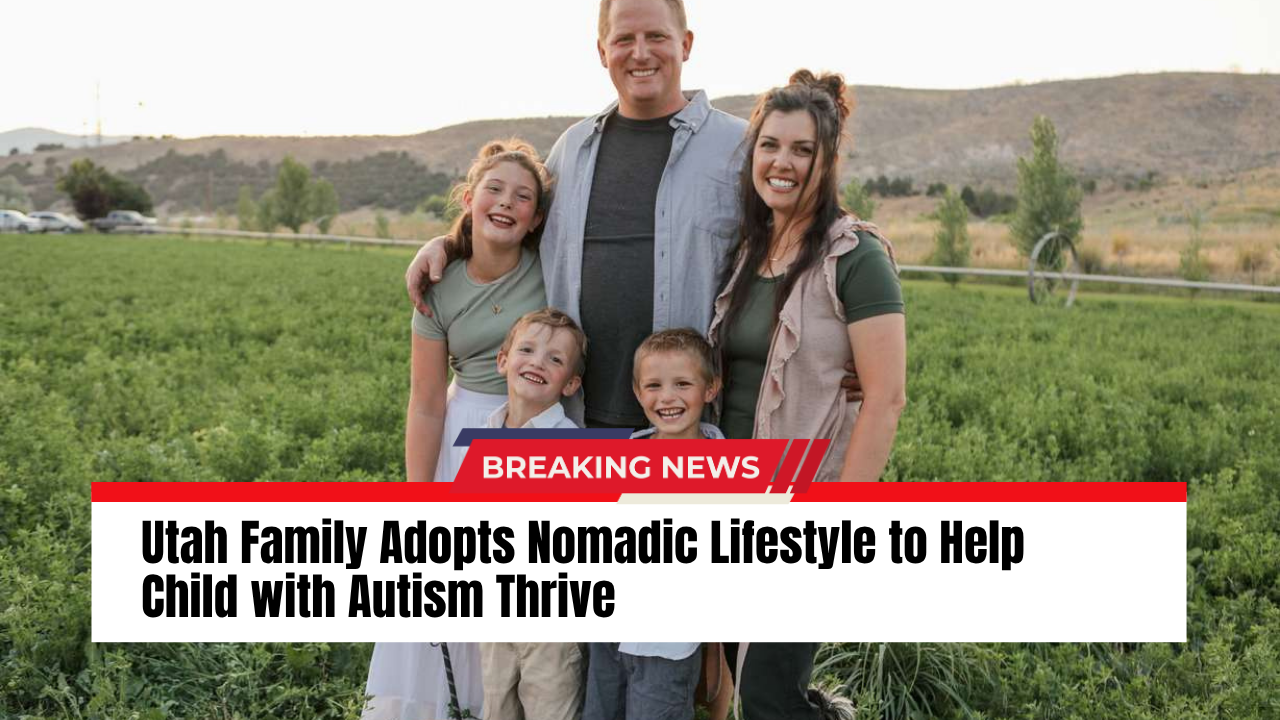A Utah family’s decision to trade traditional living for life on the road has transformed not just their daily routine, but their son’s ability to connect, learn, and thrive while living with autism.
For the McKinley family, what began as an unconventional experiment has become a full-fledged way of life. Traveling across the western United States in an RV, they have discovered that flexibility, exploration, and nature have provided their son with the stability and stimulation he needs — something they couldn’t fully achieve in a conventional setting.
Their story highlights a growing movement among families seeking alternative learning environments and autism-friendly lifestyles, combining adventure with personalized education and therapy.
Leaving the Comfort Zone for the Open Road
When Sarah and David McKinley, both Utah natives, first proposed selling their home and taking their family on the road, friends and relatives were skeptical. The couple had long struggled to find an educational environment suited to their 10-year-old son, Eli, who was diagnosed with autism at age three.
“We tried everything — different schools, therapy centers, even homeschooling,” said Sarah. “But Eli still struggled with sensory overload and rigid schedules. We realized we needed a lifestyle that worked for him, not the other way around.”
In 2022, the family sold their home in Draper, Utah, downsized their belongings, and invested in a self-contained recreational vehicle (RV) equipped with solar panels, workspace, and a therapy-friendly setup.
Their travels have since taken them from the deserts of southern Utah to the forests of Oregon, and along scenic routes managed by the Utah Department of Transportation and Federal Highway Administration.
“Living on the road allows Eli to learn through experience,” said David. “Instead of being confined to a classroom, he’s learning geography by hiking, science by observing nature, and social skills by meeting people from all walks of life.”
| Category | Traditional Lifestyle | Nomadic Lifestyle |
|---|---|---|
| Learning Environment | Structured classrooms | Outdoor, experience-based learning |
| Daily Routine | Fixed schedule | Flexible, adaptive routine |
| Social Interaction | Limited peer settings | Diverse community encounters |
| Sensory Challenges | High (noise, crowds) | Low (natural, quiet settings) |
Therapy Through Travel
Experts in autism care say that lifestyle changes like this can yield measurable benefits when done mindfully. According to the Utah Department of Health and Human Services, around 1 in 36 children in the U.S. are diagnosed with autism spectrum disorder (ASD), and personalized approaches are often essential.
“The McKinley family’s experience demonstrates how environment plays a critical role in managing sensory and behavioral needs,” said Dr. Laura Simmons, a developmental therapist based in Salt Lake City. “Movement, routine flexibility, and natural surroundings can be incredibly therapeutic for children with ASD.”
Eli’s parents have built therapy into their travels. His daily schedule includes speech practice, sensory breaks, and creative projects, often inspired by the day’s adventures. Whether it’s rock collecting in Arches National Park or journaling after a wildlife sighting, Eli learns through hands-on engagement.
“Eli used to shut down during transitions,” Sarah said. “Now, he wakes up excited for what’s next. He thrives on discovery — it’s become his therapy.”
The family also uses technology to stay connected with healthcare providers. Through telehealth appointments and remote consultations, Eli continues to receive professional guidance while on the move.
Their approach reflects a growing national trend toward road-schooling — a blend of homeschooling and travel-based learning — which has gained popularity since the pandemic. Online education platforms and state-supported digital schooling programs have made it easier for families like the McKinleys to balance mobility with education.
Building Community on the Move
Though life on the road can seem solitary, the McKinleys say their journey has been full of community and connection. They’ve joined groups like Fulltime Families, an organization that helps traveling families connect and share resources.
“Everywhere we go, we meet other families who are also redefining what education and childhood can look like,” David explained. “It’s a reminder that learning doesn’t have to fit one mold.”
Still, the lifestyle comes with challenges — from managing healthcare access to planning travel routes based on weather updates from the National Weather Service. Internet connectivity, RV maintenance, and the constant need to plan ahead add layers of complexity.
But the rewards, they say, outweigh the difficulties. “Eli laughs more now. He’s calmer, more expressive, and more confident,” said Sarah. “We finally feel like we’re living with him, not just caring for him.”
The family plans to continue traveling through 2026, exploring new destinations across the Pacific Northwest and parts of the Southwest. They eventually hope to settle in a small Utah community where Eli can blend outdoor exploration with social opportunities.
“We’ll keep traveling until it stops helping him grow,” Sarah said. “Right now, every mile is progress.”
A Model for Adaptive Living
The McKinley family’s journey offers a glimpse into how nontraditional lifestyles can complement developmental therapy for children with autism. By integrating structure with freedom, and education with travel, they’ve created a model that prioritizes mental health and curiosity.
Their story underscores the value of adaptive living — one that responds not just to financial or social circumstances, but to the unique neurological needs of every child.
“Every family has to find what works,” Sarah reflected. “For us, it’s movement, nature, and connection. That’s what makes Eli thrive.”
As awareness around autism continues to grow, families like the McKinleys are showing that flexibility — in both mindset and lifestyle — can open new paths to inclusion and understanding.



